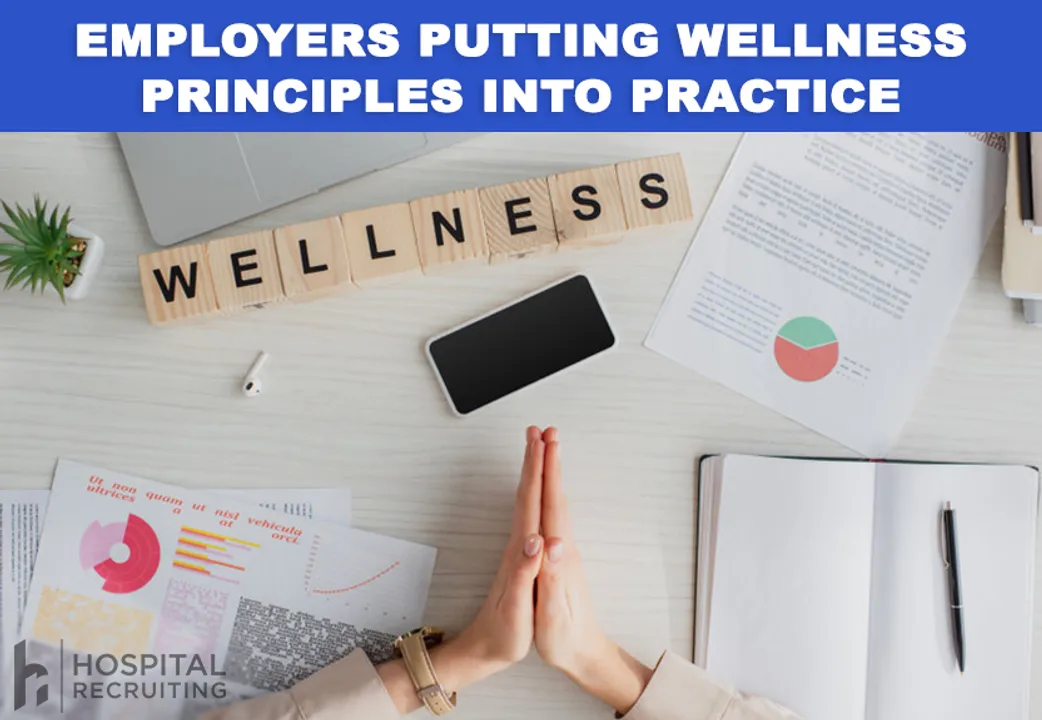How Healthcare Employers are Implementing Wellness Principles into the Workplace

To say the Covid-19 pandemic has changed everyday life and work culture would be an understatement. For physicians of any specialty, this ongoing modern-day plague has challenged us beyond comprehension. While the fallout from this pandemic will not be entirely known for years to come, there are some more immediate changes to the practice of medicine that have come as necessary adaptations in the face of social and occupational restrictions.
In facilitating these adaptations, many employers and workplaces have looked more discerningly at how to optimize well-being of physicians and integrate the principles of wellness and burnout-prevention into everyday life.
There are few professions for whom mental and physical wellness, and work-life balance, seems more important. However, medicine has been slow to accept the need for self-care and active burnout prevention as a daily practice, inside and out of the workplace. Luckily, the time has come when many employers, from larger healthcare systems to hospitals and smaller practices, are integrating specific cultural and actionable changes to help safeguard their employees’ well-being.
Example
For Katie*, making it through the first two years of emergency medicine training felt like a major milestone; with the end in sight, she started out her third year of residency with optimism and confidence. However, after the work environment started to change with the onset of the pandemic, it dawned on her that her normal reserves for emotional resilience and coping with what she saw on the job would not suffice. At the suggestion of her husband, she sought out resources within the hospital’s employee support services. She got connected with a mental health counselor on a confidential basis and began having virtual counseling sessions which she has continued to do even after graduating and starting on at her academic hospital center as an EM attending. “I didn’t feel shamed or guilted at all about prioritizing my mental wellbeing,” she said. Part of what drew her to staying on at her hospital was the variety of resources made available on a confidential basis and the support she saw her colleagues getting when they would take longer vacations or health-related sabbaticals.
*Name and some details changed for confidentiality
What to look for
In Katie’s case, being part of a larger hospital system helped to gain access to professional resources that specifically target healthcare professionals. These types of support entities are excellent for physicians (and other healthcare team members) because everything is completely confidential, and records are not kept or accessible by the employer under any circumstance. They also are typically exclusively remote-based, which is appealing for people with irregular hours and unpredictable schedules. Some examples of these types of programs are: VITAL Work Life, WellSteps, EPhysicianHealth, & Kaiser Program for Physician Wellness.
There are also tons of blogs, podcasts, websites, online programs, and videos online in regard to physician burnout and physician wellness.
If you are comparing jobs at various hospital systems, or even larger more well-endowed practices, it might be helpful to inquire what, if any, physician support systems there are as part of the job benefits. While you may not feel like you would need or use such a service now, you never know when this kind of resource could come in handy.
Other options
If programs designed specifically to support physician wellness aren’t of importance to you, or if you’d like to handle your own burnout-prevention and wellness in a different way, here are some other features that might be worth considering:
- Work hours: What is the actual amount of hours spent in the office and in the hospital for physicians with your same position? Are junior attendings expected to stay longer or take more frequent call than more senior members of a group? What is the backup system if someone cannot take their assigned call shift due to emergency? Are post-call days scheduled with patients in-office? Can late-days be negotiated such that you can have one half-day or even one day off per week?
- Vacation: How many vacation days are allowed per year? Is this negotiable? Does vacation (PTO) accrue, or does it come en bloc at the beginning of each year? Can un-used PTO days be exchanged for compensation? What are the rules about taking multi-week vacations? Do holidays worked result in an extra PTO day?
- Sick leave: What is the requirement for sick leave that extends past one or two days? Does a letter certifying illness need to be submitted? Can leave be taken in the event of a need for wellness-based care? Do sick days carry-over from year to year? If unused, can they be exchanged for compensation?
- Work from home: What is the attitude and culture around working-from-home when not in patient-facing time at work? Can administrative and research duties be carried out remotely? What are the options for doing telehealth? Can one or one half-day per week be devoted to remote telehealth visits? What is the technical support and /or troubleshooting resources for telehealth?
- Documentation: How much time, on average, do the physicians in the group spend on documentation per day/week? What is the system in place for billing, and who deals with billing and insurance issues? Are there dictation devices (such as Dragon) available for ease of charting? Is there an option to hire a medical scribe for ease of documentation?
- Mentorship: What supports are built-in within the practice/department/hospital/system for mentoring younger attendings? Who serves as the main liaison within the department for handling interpersonal issues or disputes within the department? How are major issues typically handled? What is the culture around feedback and improving culture? Is the concept of “just culture” emphasized within the group?
Wellness, well-being, burnout-prevention, mental health... or however you spin it, taking care of your body and mind is extremely important in medicine. While there is not yet a very strong cultural emphasis on self-care within the medical community, these concepts are becoming increasingly adopted as a priority within some hospitals and medical systems. On an individual level, there are concrete ways you can leverage your priority for mental and physical well-being while on the job search. Hopefully these purposeful and slightly more subtle examples will help you to think about where your priorities lie and how you will take steps to better your everyday work/life!
Related Posts
